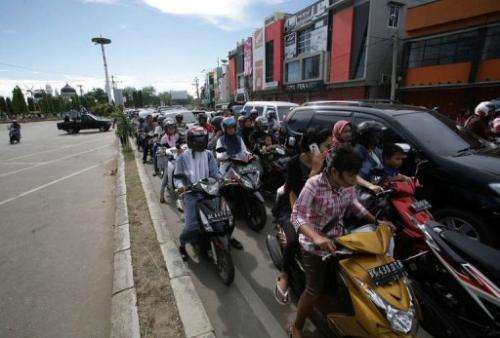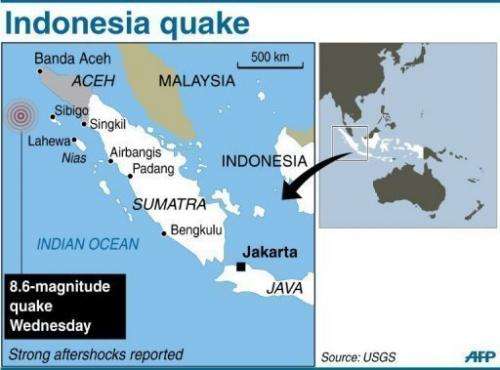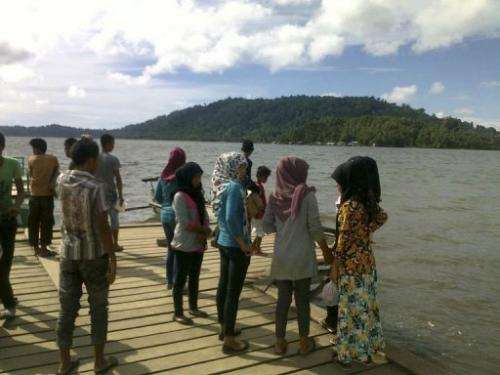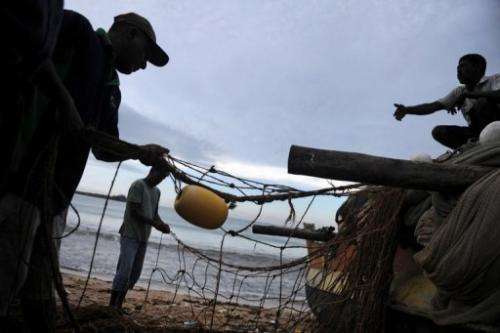Asian tsunami warnings test post-2004 systems

Giant quakes off Indonesia caused panic but little damage, in a successful test of warning systems and evacuation plans introduced after the catastrophic 2004 Asian tsunami, experts said Thursday.
In the tense hours that an Indian Ocean-wide tsunami watch remained in effect Wednesday, Indonesian meteorologists were monitoring offshore buoys that measured the waves, confidently predicting that the likelihood of a large tsunami was minimal.
Another warning system has risen to the fore since 2004 as the use of smartphones and social media has exploded across Asia, helping to spread the word on Wednesday across other affected nations such as Thailand and India.
"The early warning system is working well," Indonesian President Susilo Bambang reassured the nation in a televised address on Wednesday. "So far, there is no tsunami threat."
Indonesia launched a $130-million tsunami warning system in November 2008 in a bid to prevent a repeat of tragedies like the 2004 disaster, which killed around 170,000 people in the archipelago nation alone.
"We knew that a tsunami could hit the coast in about 50 minutes, and we were monitoring for it," said Suharjono, head of the earthquakes department at the Meteorology and Geophysics Agency (BMKG).

"We also knew which parts of the coast to watch," he said, explaining that offshore buoys send signals to monitoring stations in Indonesia and beyond.
The BMKG reported only a few small tsunamis of up to 80 centimetres (31 inches) had hit Indonesia's coast, its reports confirmed by witnesses.
"I think the warning system responded very well, it's picking up the size of the event, it's picking up where it came from, it's saying this is shallow," said James Goff, director of the Australia-Pacific Tsunami Research Centre at the University of New South Wales.
He said Wednesday's alert was a "decent test" of the Indian Ocean tsunami warning system, an ambitious network of tidal gauges, deep ocean buoys and seismic monitors modelled on the decades-old Pacific model completed after the 2004 tsunami.

Suharjono said that in Indonesia, the data can be processed and disseminated within three minutes.
The local government is sent the information and is in charge of acting on it.
"We thought it went extremely well yesterday, according to reports from conversations we've had with NGOs and people on the ground," said Denis Okello, information officer at the UN Office for the Coordination of Humanitarian Affairs in Jakarta.
He said sirens meant to warn people to move to higher ground had been activated by the local government, which was receiving SMS messages and emails from BMKG.
"We took action quickly as soon as I got phone messages from BMKG," said Teuku Ahmad Dadek, head of western Aceh's disaster management agency, adding that some people on the coast were immediately warned to head for higher ground.

In a nation with one of the world's highest number of phone texters -- and the globe's fastest growing major market for BlackBerry smartphones -- telephone alerts are also an important way for the BMKG to spread its warnings.
"I think some people got text messages, but we didn't get any at the school because the phone lines were down for some time after the quake," said Nunik Nurwanpi, a 20-year-old primary school teacher in Banda Aceh.
"We all knew what to do anyway because we've had regular tsunami drills since the big one in 2004," she said, adding that children were evacuated from the school and moved to higher ground when sirens blared.
Unlike the 2004 quake and tsunami, which all but wiped out Aceh's provincial capital Banda Aceh, Wednesday's quake caused minimal damage because the epicentre was much farther offshore, Suharjono said.
Residents said that new wider roads, to facilitate easier evacuation, had helped during Wednesday's quake.
Last year, a 9.0-magnitude earthquake caused a tsunami and nuclear disaster in Japan, killing some 19,000 people.
(c) 2012 AFP

















